-
 Bitcoin
Bitcoin $84,655.6797
1.84% -
 Ethereum
Ethereum $1,638.2069
4.51% -
 Tether USDt
Tether USDt $0.9995
0.00% -
 XRP
XRP $2.1285
5.77% -
 BNB
BNB $595.2684
1.49% -
 Solana
Solana $129.1530
7.51% -
 USDC
USDC $0.9999
-0.01% -
 Dogecoin
Dogecoin $0.1658
4.36% -
 TRON
TRON $0.2482
2.47% -
 Cardano
Cardano $0.6480
4.17% -
 UNUS SED LEO
UNUS SED LEO $9.3414
-0.53% -
 Chainlink
Chainlink $13.0482
3.43% -
 Avalanche
Avalanche $20.2950
5.30% -
 Stellar
Stellar $0.2452
5.80% -
 Toncoin
Toncoin $3.0180
1.99% -
 Sui
Sui $2.2916
4.56% -
 Shiba Inu
Shiba Inu $0.0...01256
4.22% -
 Hedera
Hedera $0.1711
2.66% -
 Bitcoin Cash
Bitcoin Cash $345.7661
11.04% -
 MANTRA
MANTRA $6.3308
-1.24% -
 Litecoin
Litecoin $78.4049
2.68% -
 Polkadot
Polkadot $3.6950
3.97% -
 Hyperliquid
Hyperliquid $16.1883
5.27% -
 Dai
Dai $1.0001
0.02% -
 Bitget Token
Bitget Token $4.3687
0.62% -
 Pi
Pi $0.7296
20.84% -
 Ethena USDe
Ethena USDe $0.9989
0.02% -
 Monero
Monero $206.1586
1.51% -
 Uniswap
Uniswap $5.5276
5.12% -
 OKB
OKB $53.5408
0.54%
What is shared security?
Shared security in blockchain allows smaller networks to leverage the robust security of a primary blockchain, enhancing efficiency and reducing costs.
Apr 12, 2025 at 07:29 pm
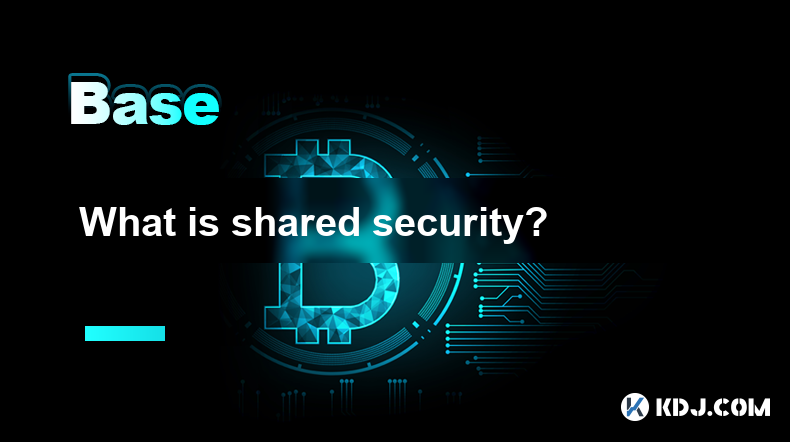
Shared security in the context of cryptocurrencies and blockchain networks refers to a mechanism where multiple blockchain networks or applications utilize the security infrastructure of a primary blockchain. This approach enhances the security and efficiency of smaller or newer blockchains by leveraging the established security measures of a more robust network.
How Shared Security Works
Shared security operates on the principle that a single, well-secured blockchain can provide security to other networks that connect to it. This is often seen in layer-2 solutions, sidechains, and other scaling technologies that aim to enhance the throughput and functionality of the primary blockchain without compromising security.
For instance, in the Ethereum ecosystem, layer-2 solutions like Optimism and Arbitrum use Ethereum's security to process transactions off the main chain, thereby reducing congestion and fees while maintaining the integrity of the transactions through Ethereum's robust security protocols.
Benefits of Shared Security
The primary advantage of shared security is the ability to enhance the security of smaller networks without the need for them to build and maintain their own extensive security infrastructure. This can be particularly beneficial for new blockchain projects that may not have the resources to establish a secure network from scratch.
Additionally, shared security can lead to more efficient resource allocation. By utilizing the security of a well-established blockchain, smaller networks can focus their resources on developing innovative features and applications rather than on maintaining security measures.
Challenges and Considerations
Despite its advantages, shared security is not without challenges. One significant concern is the dependency on the primary blockchain. If the main network experiences security issues, all connected networks could be affected. This interdependence requires careful management and robust security protocols on the primary blockchain to ensure the safety of all networks relying on it.
Another consideration is the potential for centralization. If too many networks rely on a single blockchain for security, it could lead to a concentration of power and influence, which goes against the decentralized ethos of many blockchain projects.
Examples of Shared Security in Action
Several notable examples illustrate how shared security is implemented in the cryptocurrency world.
Polkadot: Polkadot uses a shared security model where multiple parachains (parallel blockchains) are secured by the main Relay Chain. The Relay Chain validators secure the entire network, including all connected parachains, providing a unified security framework.
Cosmos: The Cosmos network employs the Inter-Blockchain Communication (IBC) protocol to connect different blockchains, allowing them to share security and interoperability. This enables smaller chains to benefit from the security of larger, more established networks within the Cosmos ecosystem.
Ethereum Layer-2 Solutions: As mentioned earlier, solutions like Optimism and Arbitrum utilize Ethereum's security to process transactions more efficiently. These layer-2 networks rely on Ethereum's consensus mechanism to ensure the validity and security of their transactions.
Implementing Shared Security
For a blockchain project interested in implementing shared security, several steps need to be followed:
Choose a Primary Blockchain: Identify a well-established blockchain with robust security measures that align with your project's goals. This could be Ethereum, Polkadot, or another network known for its security.
Understand the Security Model: Thoroughly research the security model of the primary blockchain. Understand how it secures its network and what mechanisms are in place to protect connected networks.
Develop the Connection Protocol: Create a protocol that allows your blockchain to connect to the primary blockchain. This could involve developing a sidechain, a layer-2 solution, or a parachain, depending on the primary network's architecture.
Ensure Compatibility: Ensure that your blockchain's architecture is compatible with the primary blockchain's security protocols. This may require adjustments to your consensus mechanism or transaction validation processes.
Test and Validate: Before fully integrating, conduct thorough testing to ensure that the shared security model works as intended. This includes stress testing the connection and validating transactions under various scenarios.
Launch and Monitor: Once the connection is established, launch your blockchain and continuously monitor its performance and security. Regular audits and updates may be necessary to maintain the integrity of the shared security model.
Frequently Asked Questions
Q: Can shared security be used by any blockchain project?
A: While shared security can be beneficial for many projects, it is most suitable for those that can align their architecture with the primary blockchain's security model. Projects with unique consensus mechanisms or those that require high levels of autonomy may find it challenging to implement shared security effectively.
Q: How does shared security affect the scalability of a blockchain network?
A: Shared security can enhance scalability by allowing smaller networks to offload some of their security responsibilities to a more robust primary blockchain. This can lead to faster transaction processing and lower fees, as seen in layer-2 solutions on Ethereum.
Q: What are the risks of relying on shared security?
A: The primary risk is the dependency on the security of the primary blockchain. If the main network faces security breaches or other issues, all connected networks could be compromised. Additionally, there is a risk of centralization if too many networks rely on a single blockchain for security.
Q: How can a project ensure the long-term viability of shared security?
A: To ensure long-term viability, a project should continuously monitor the security of the primary blockchain, participate in its governance to influence security decisions, and have contingency plans in place in case of security failures. Regular audits and updates to the connection protocol are also essential.
Disclaimer:info@kdj.com
The information provided is not trading advice. kdj.com does not assume any responsibility for any investments made based on the information provided in this article. Cryptocurrencies are highly volatile and it is highly recommended that you invest with caution after thorough research!
If you believe that the content used on this website infringes your copyright, please contact us immediately (info@kdj.com) and we will delete it promptly.
- Shiba Inu (SHIB) Has Cemented Its Status as One of the Trendiest Meme Coins
- 2025-04-13 02:00:13
- MAGACOIN FINANCE (MGA) Is Buzzing—and It's One of the Best Cryptos to Buy Today
- 2025-04-13 02:00:13
- Once gushed over and tipped to usurp Bitcoin, Ethereum now faces what at least one analyst has dubbed a “midlife crisis.”
- 2025-04-13 01:55:14
- Sui (SUI), which is in the 17th position of cryptocurrencies, has been getting more attention recently
- 2025-04-13 01:55:14
- UXLINK Partners with Stanford to Shape the Future of Digital Currency
- 2025-04-13 01:55:13
- SUI Price Recovers Strongly from Recent Lows After Reclaiming the $2.18 Mark. The Price is Now Testing Resistance at $2.22
- 2025-04-13 01:55:13
Related knowledge

What is Delayed Encryption technology?
Apr 11,2025 at 10:42pm
What is Delayed Encryption Technology? In the world of cryptocurrencies, security is paramount. One of the innovative solutions to enhance the security of digital transactions is Delayed Encryption Technology. This technology introduces a layer of security by encrypting data with a time delay, ensuring that the information remains secure until a specifi...
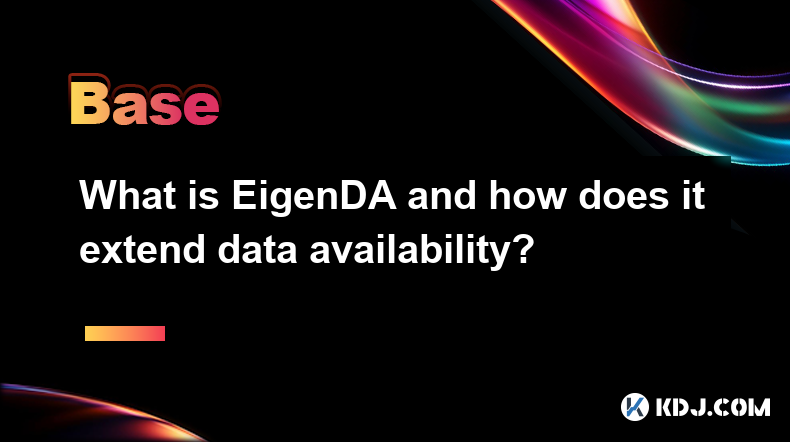
What is EigenDA and how does it extend data availability?
Apr 11,2025 at 05:28pm
EigenDA is a groundbreaking solution within the cryptocurrency ecosystem designed to enhance data availability across blockchain networks. Developed by EigenLayer, EigenDA aims to address the critical issue of data availability, ensuring that all participants in a blockchain network can access the necessary data to verify transactions and maintain the i...
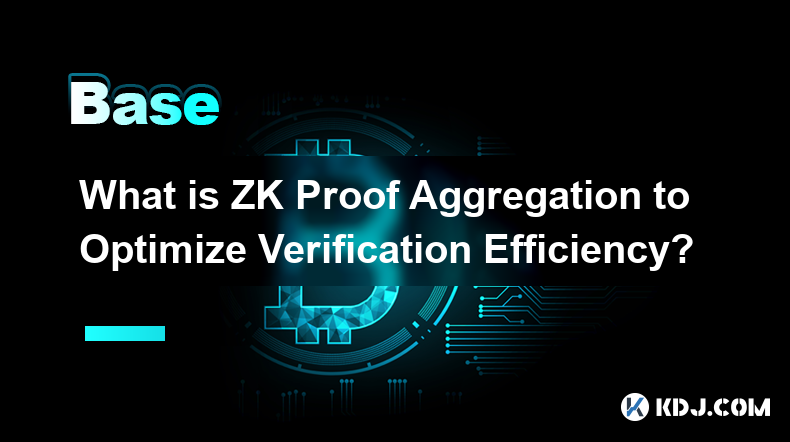
What is ZK Proof Aggregation to Optimize Verification Efficiency?
Apr 11,2025 at 05:42pm
ZK Proof Aggregation is a technique used in the field of zero-knowledge proofs (ZKPs) to enhance the efficiency of verifying multiple proofs. In the context of cryptocurrencies, where scalability and efficiency are paramount, ZK Proof Aggregation plays a crucial role in optimizing the verification process. This method allows multiple proofs to be combin...

What is DePIN (Decentralized Physical Infrastructure)?
Apr 12,2025 at 01:42am
What is DePIN (Decentralized Physical Infrastructure)? DePIN, or Decentralized Physical Infrastructure, represents a groundbreaking approach to building and managing physical infrastructure using decentralized technologies. At its core, DePIN leverages blockchain and other decentralized systems to create, operate, and maintain physical assets in a way t...
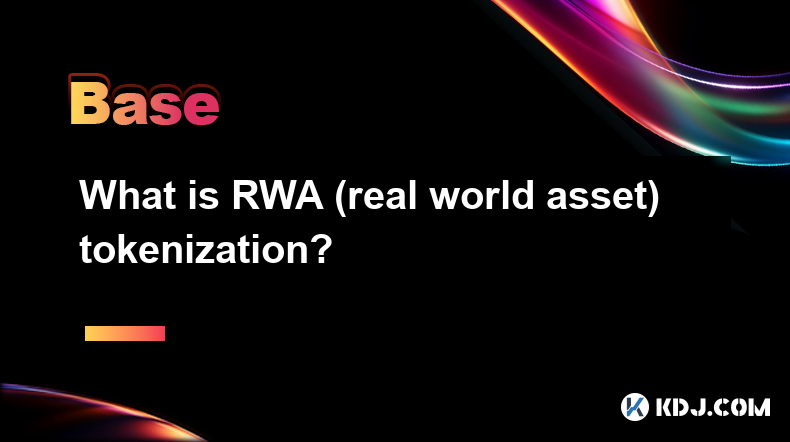
What is RWA (real world asset) tokenization?
Apr 13,2025 at 12:21am
What is RWA (Real World Asset) Tokenization? RWA (Real World Asset) tokenization refers to the process of converting tangible or intangible real-world assets into digital tokens on a blockchain. This innovative approach allows for the representation, ownership, and transfer of assets such as real estate, art, commodities, and intellectual property throu...
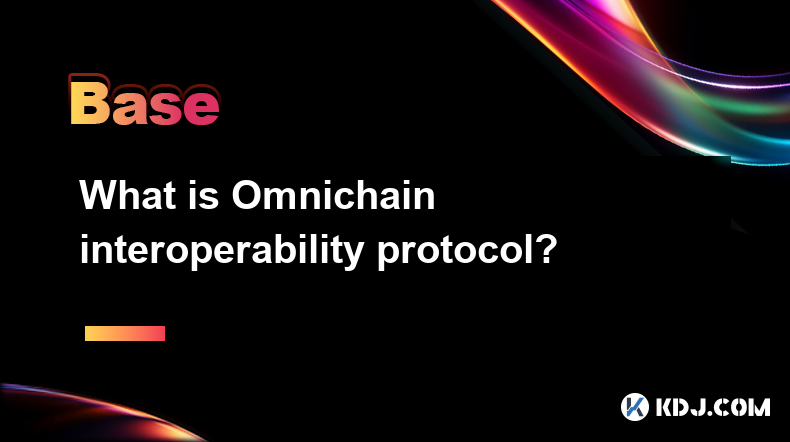
What is Omnichain interoperability protocol?
Apr 11,2025 at 08:36pm
The Omnichain interoperability protocol refers to a technology designed to enable seamless interaction and data exchange between different blockchain networks. This protocol aims to solve the issue of blockchain isolation by allowing assets, data, and functionalities to move freely across various chains. In essence, Omnichain interoperability facilitate...

What is Delayed Encryption technology?
Apr 11,2025 at 10:42pm
What is Delayed Encryption Technology? In the world of cryptocurrencies, security is paramount. One of the innovative solutions to enhance the security of digital transactions is Delayed Encryption Technology. This technology introduces a layer of security by encrypting data with a time delay, ensuring that the information remains secure until a specifi...

What is EigenDA and how does it extend data availability?
Apr 11,2025 at 05:28pm
EigenDA is a groundbreaking solution within the cryptocurrency ecosystem designed to enhance data availability across blockchain networks. Developed by EigenLayer, EigenDA aims to address the critical issue of data availability, ensuring that all participants in a blockchain network can access the necessary data to verify transactions and maintain the i...

What is ZK Proof Aggregation to Optimize Verification Efficiency?
Apr 11,2025 at 05:42pm
ZK Proof Aggregation is a technique used in the field of zero-knowledge proofs (ZKPs) to enhance the efficiency of verifying multiple proofs. In the context of cryptocurrencies, where scalability and efficiency are paramount, ZK Proof Aggregation plays a crucial role in optimizing the verification process. This method allows multiple proofs to be combin...

What is DePIN (Decentralized Physical Infrastructure)?
Apr 12,2025 at 01:42am
What is DePIN (Decentralized Physical Infrastructure)? DePIN, or Decentralized Physical Infrastructure, represents a groundbreaking approach to building and managing physical infrastructure using decentralized technologies. At its core, DePIN leverages blockchain and other decentralized systems to create, operate, and maintain physical assets in a way t...

What is RWA (real world asset) tokenization?
Apr 13,2025 at 12:21am
What is RWA (Real World Asset) Tokenization? RWA (Real World Asset) tokenization refers to the process of converting tangible or intangible real-world assets into digital tokens on a blockchain. This innovative approach allows for the representation, ownership, and transfer of assets such as real estate, art, commodities, and intellectual property throu...

What is Omnichain interoperability protocol?
Apr 11,2025 at 08:36pm
The Omnichain interoperability protocol refers to a technology designed to enable seamless interaction and data exchange between different blockchain networks. This protocol aims to solve the issue of blockchain isolation by allowing assets, data, and functionalities to move freely across various chains. In essence, Omnichain interoperability facilitate...
See all articles























































































